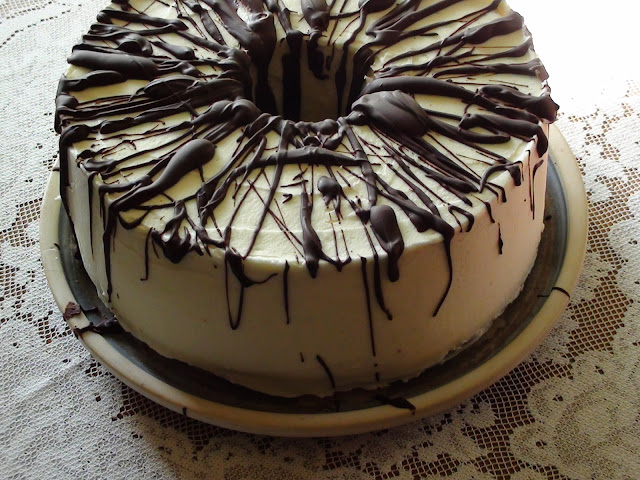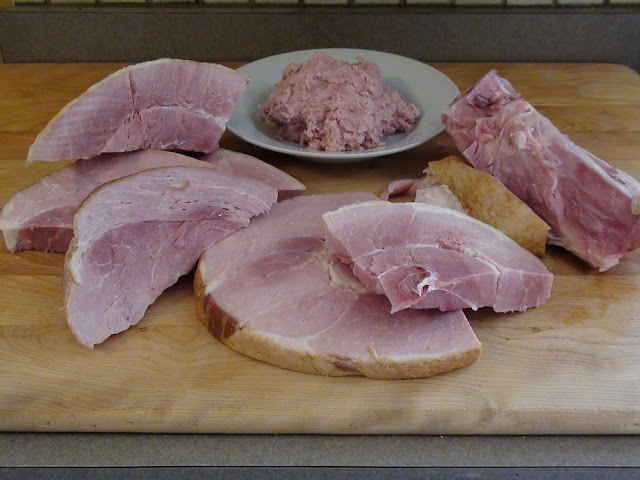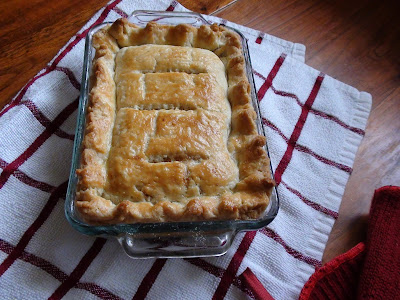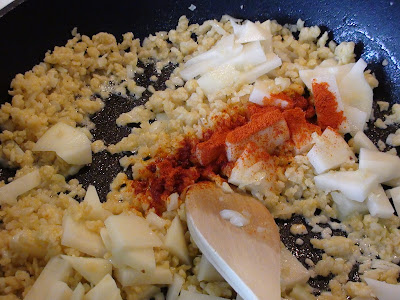
I am still making cakes. We have to eat right? The last time I made this was back in 1971; our son, Peter was less than a year old. I recall the occasion I hastily made it for and the feeling of awe that the recipe actually worked for me. It comes more or less from my tattered 50+ years old Better Homes and Gardens Cookbook. When the kids were small I often made them tube cakes; they were less demanding to decorate. Especially during the 7 minute frosting trend.
According to current instructions we still have to bake the cake in an ungreased tube pan. Alas the cake does not always come out intact from an ungreased tube pan. Buttering the pan or painstakingly lining it with parchment just doesn’t work. The solution? I lightly spray the tube pan with unflavored cooking spay. Lightly!
The idea to turn the tube pan upside down over the neck of a glass bottle is a harebrained idea! Ten to one the tube pan will come crashing down and you will be picking cake bits from the floor. In truth as long as you place the tube pan on a wire rack to cool, the top of your cake will not be soggy. A number of traditional cooking practices just don’t make sense. Cooks do them, recipe books repeat them and people rarely realize they are holding onto ideas without ever questioning their validity.
Tropical Chiffon Cake
2 1/4 cup sifted cake flour
1 1/2 cup sugar
3 tsp baking powder
1 tsp salt
1/2 cup vegetable oil
3/4 cup egg yolks, about 8
1 tsp grated orange peel
3/4 cup pure orange juice
2 tsp orange extract
1 cup egg whites, about 8
1/2 tsp cream of tartar
1 1/3 cups fine unsweetened coconut
White Chocolate Buttercream
1 1/2 cups unsalted butter, room temperature
1 tsp vanilla extract
1/2 tsp salt
5 cups icing sugar
1/6 cup whipping cream
1/2 cup melted and cooled white chocolate
Chocolate Drizzle
2 1oz pure chocolate squares
1/8 cup whipping cream
1 tsp of butter
• Preheat the oven to 325F.
• Sift flour, sugar, baking powder, and salt into bowl.
• Make well in center and add in order: oil, egg yolks, orange peel and orange juice and orange extract.
• Beat until satin smooth.
• Beat egg whites with cream of tartar to VERY STIFF peaks.
• Pour batter in thin stream evenly over entire surface of egg whites; fold in gently.
• Gently fold in the coconut.
• Just prior to baking, spray a 10 inch tube pan lightly with unflavored cooking spray.
• Fill the pan with the prepared cake batter and place it in the preheated oven for 55 minutes.
• Check with a cake tester or a sharp knife. If they come out clean, the cake is done.
• Transfer the tube pan to a wire rack to cool.
• While the cake cools, make the buttercream.
• Beat the butter with whisk attachment until smooth.
• Add the vanilla extract and salt and beat to combine.
• Gradually add half the icing sugar on low speed.
• Next add the heavy cream.
• Gradually add the remaining icing sugar and continue to beat on low speed until fully incorporated.
• Add the cooled melted white chocolate on a low speed and scrape down the sides and bottom of the bowl with a rubber spatula as needed.
• Beat the buttercream on high speed for 4 minutes until smooth and fluffy.
• If too thick, add cream, one tablespoon at a time.
• If too thin, add icing sugar, a quarter cup at a time.
• Cover with plastic wrap and set the buttercream aside.
• When the cake is at room temperature, gently move a dull knife around the perimeter of the pan to loosen the cake.
• Add a dab of frosting to a cake plate. This helps stick the cake onto the plate.
• Next, position the cake plate over the tube pan with the bottom layer on top.
• Holding on tight to both the plate and tube pan and invert. Now the cake rest on the plate and you can gently lift off the tube pan.
• Crumb coat the entire cake and chill for half an hour.
• Spread the remaining frosting over the cake using a large straight spatula.
• For a smooth finish, dip the spatula into hot water before smoothing the frosting.
• Rinse off the residue with hot running water between every swipe.
• To finish the cake you can decorate it with candied orange slices or scattering desiccated coconut on top. Since the cake was for a chocoholic, I simply melted 2 squares of pure chocolate with 1/8 cup of whipping cream, stirred in 1 tsp butter. I let the chocolate cool to room temperature and using a teaspoon I drizzled the chocolate over the cake.
 Crepes Suzette is delightful. After my grandson and his partner left, I had a large unused thick and very much unsweetened orange juice in the fridge. Jimre drank it valiantly, and one day he said “maybe do something with this juice”. Hmm. I will make Crepe Suzette. He had some more orange juice after all. If using freshly squeezed orange juice, I estimate 12 oranges are plenty.
Crepes Suzette is delightful. After my grandson and his partner left, I had a large unused thick and very much unsweetened orange juice in the fridge. Jimre drank it valiantly, and one day he said “maybe do something with this juice”. Hmm. I will make Crepe Suzette. He had some more orange juice after all. If using freshly squeezed orange juice, I estimate 12 oranges are plenty. 








































